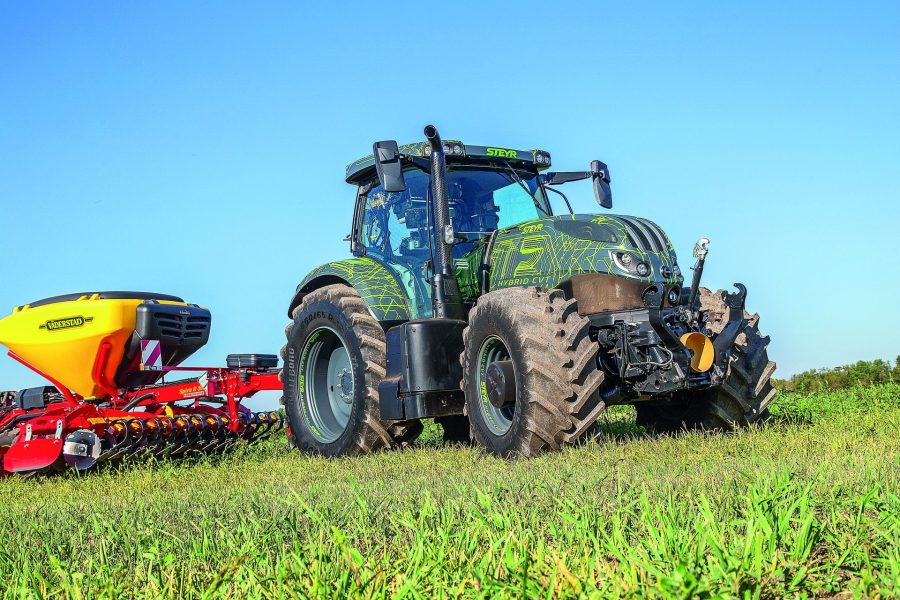TECHNICAL: Generally a four-wheel-drive shaft is used to transmit power from the back axle to the front. Steyr, however, is looking to turn this from one-way to two-way traffic, by adding an electric motor at the front to shove power back along the driveline. We find out why there’s a buzz around the Hybrid CVT.
Back in 2019, Steyr presented an extremely futuristic version of the Hybrid CVT at Agritechnica. On this concept, all four wheels were driven electrically; now, four years later, the first Hybrid CVT is out in the field — a little less futuristic, but still with a striking livery and with one instead of two electric motors.
The ‘hybrid’ tag refers to two key elements on the Steyr prototype — first there is the all-important electric drive system, which is partnered with a traditional continuously variable power-splitting transmission. The second part is the supercapacitor used to store energy from the diesel engine.
260hp in a 175hp outfit
In terms of wheelbase and transmission, the Hybrid CVT is based on the smaller Impuls range (Case IH Puma and New Holland T7 short wheelbase) with models up to 127kW/175hp. In fact, technically there are hardly any differences under the bonnet, which still acts as home to a 6.7-litre, six-cylinder FPT motor, although its power output has been increased up to 190kW/260hp, which is on a par with that of the larger Absolut model, as 75kW of this is transferred directly to a generator/alternator. This, in turn, powers the independent drive of the front axle via an electric motor, which is positioned directly in front of the differential gear.
For more up-to-date farming news click here and subscribe now to profi and save.






